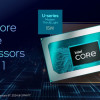Intel brings hyperthreading to luggable notebooks
Intel Corp. will bring its hyperthreading technology to its Mobile Intel Pentium 4 processor, which is used in desktop-replacement notebooks, the company announced Tuesday. Hyperthreading allows a multithreaded operating system or application to take advantage of unused execution units in a single-threaded processor. Hyperthreading sends software instructions that aren't dependent on the execution of other instructions to those unused execution units, allowing the processor to do more work than it normally could.
The technology only kicks in when a user is running his or her PC at maximum performance, said Dean McCarron, principal analyst at Mercury Research Inc. in Cave Creek, Arizona. It helps users more quickly execute two demanding tasks, such as video editing or virus scanning, at the same time, McCarron said.
Hyperthreading operates independently of Intel's SpeedStep technology, designed to manage a notebook processor's power consumption, an Intel spokeswoman said. SpeedStep varies the clock speed of a mobile processor in order to conserve power between application tasks or even keystrokes.









































































